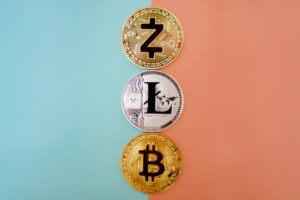When people ask me what I do, I often describe myself as an educator. I have held a broad range of conventional and non-conventional teaching positions throughout my life, from being a tank instructor at the Israeli Defense Forces to being an accounting TA during my business school days at UC Berkeley. Being an educator does not stop in the classroom, but continues every day for me as my line of consulting work involves putting a dollar value on intangible assets. I often find myself engaging in long tutorials with clients, explaining what intangible assets are, how they bring value, and how that value can be measured.
I started teaching IP Management at the Stanford Graduate School of Business in 2011, in the peak days of the mobile patent wars, when the AIA was just getting signed into law and the words “patent troll” sent a chill down the spine of corporate IP managers. My class has been one of the first IP classes offered by a US MBA program. Setting a foot in the door of an MBA program in an elite business school is a humbling experience. The students are extremely bright, the expectations are very high, and the competition (from other classes) is fierce. Below are my top 5 takeaways from my decade of teaching IP Management to Stanford MBA students, lessons that I hope find a good use with others planning similar classes in other business schools:
- Beating the competition – the first step in teaching a class is getting students to take the class. IP classes are usually not part of the core curriculum in business schools (core topics include business fundamentals like accounting, finance and marketing), but rather fall within the cluster of elective classes, of which there are many. The list of elective classes in modern-day business schools is long and eclectic, and they are being taught by anyone form Nobel-laureate professors, to professional athletes and celebrity CEOs. This is not very different from placing a product on a busy supermarket shelve. A lot of thought needs to go into the title and description of the class to make sure it gets the right attention and conveys the value proposition, so students are more inclined to include it in their busy schedule.
- Conveying the value proposition – My passion for bringing IP awareness into the traditional business curriculum has been driven by a strong conviction that lawyers should not be the only ones running the IP strategy in an organization. Having said that, my own conviction is not enough. Since the topic of IP is regarded as a legal topic, it is not in the main stream of business education, and therefor the value proposition needs to be very thoughtfully articulated to appeal to business students. In my particular experience, I found that topics like valuation and competitive strategy are good ways to bridge the gap, and highlight the importance of IP as a strategic business asset.
- Telling a good story – business school classes are often taught using case studies. It is a traditional way of leveraging on the power of a good story to introduce business concepts in an engaging way. That being said, IP case studies are not as readily available in traditional business school case libraries. This requires some creativity on the part of the IP instructor; for example: I have resorted to writing my own case studies (based on fictional versions of actual client cases) or modifying case studies written for other classes (for example: the Google-Motorola acquisition case written for an M&A class, has been converted by extracting the IP elements of the case). Case studies don’t necessarily have to be long and complex; since the field of IP generates daily headlines, one needs to keep an eye on the news feed and find stories for discussion that are current, which help keep the class relevant and reinforce the value proposition.
- Speaking the language of business – the key to making IP assets relevant to business students is in treating them like business assets. Even the word “assets”, a term I use often in my IP valuation practice, is not as commonly used by the legal community that usually refers to “IP Rights”. This small semantic difference between “Rights” and “Assets” provides the necessary linguistic bridge between the legal world and the business world. One of the most basic gaps when discussing IP assets in a business context is the fact that these assets are generally not reported on the balance sheets of the companies that created them (under US GAAP or IFRS). I tackle that early on in my class, by introducing transaction data and valuation approaches to valuing IP assets like any other business assets of the company.
- Introducing multiple perspectives – the topic of IP management is multi-disciplinary, spanning the legal, engineering, and business functions of the organization. This type of diversity should be reflected both in the student cohort, as well as in the speakers and topics included in an MBA business class. As far as students, while my class is primarily an MBA class, we are open to other graduate students from the law, engineering and medical schools. This student diversity enriches the class discussion and resembles the corporate environment where IP decisions are usually made. Likewise, the students often appreciate hearing from a broad range of speakers from various organizations and industries: in-house lawyers and outside counsel, startup founders and large company representatives, life sciences and high tech, etc.
In conclusion, I predict that IP will become an integral part of business education in 10-15 years, as more electives are offered by MBA programs, and as other efforts are being made to bring IP awareness into mainstream business management. Careful planning needs to go into making IP classes relevant and engaging for business students, but this will eventually result in better IP management decision being made across organizations.

